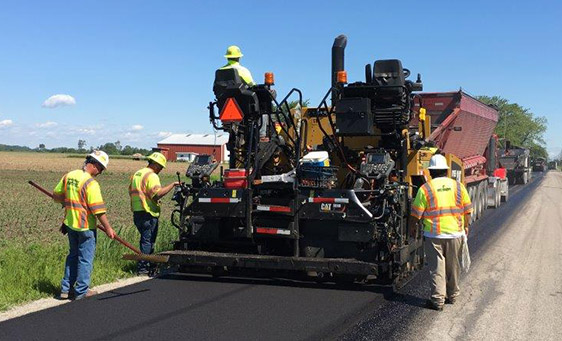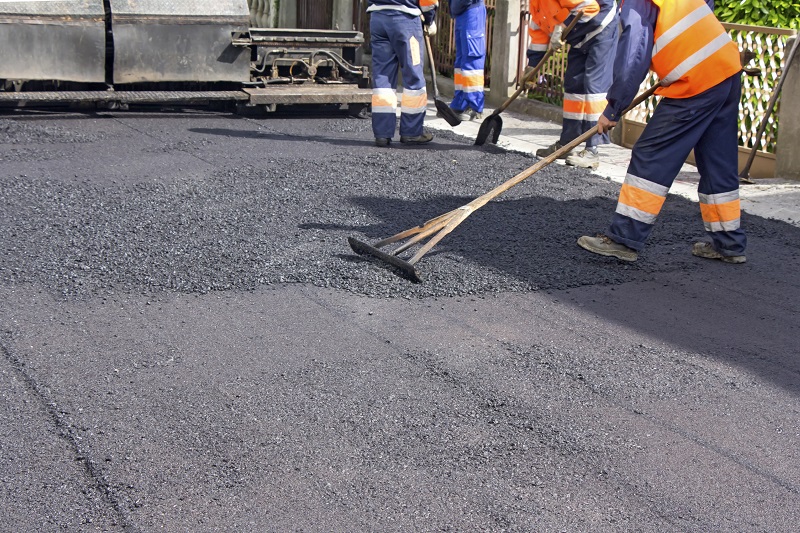Transform Your Residential or commercial property's Landscape with Hot Mix Asphalt Paving Excellence
Transform Your Residential or commercial property's Landscape with Hot Mix Asphalt Paving Excellence
Blog Article
Opening the Keys of Warm Mix Asphalt Innovation
Exploring the midsts of hot mix asphalt modern technology reveals a globe where meticulous procedures and specific solutions merge to form our roadways and infrastructure. The fusion of binders, fillers, and aggregates isn't just a building task yet a critical orchestration of longevity and efficiency. As we peer right into the detailed dance of components, a tapestry of resilience and sustainability unfolds. What exists underneath this surface area of asphaltic mastery, and what keys wait to be revealed in the realm of leading innovations?
Relevance of Hot Mix Asphalt
Warm Mix Asphalt plays a crucial role in modern infrastructure advancement as a result of its toughness and cost-effectiveness. As one of the most frequently used leading material for roadways, freeways, and parking lots, Hot Mix Asphalt offers a variety of benefits that add to its relevance in building and construction jobs. One key advantage is its capability to endure rush hour lots and extreme weather condition problems, giving a long-lasting and trustworthy surface for transportation networks. In Addition, Warm Mix Asphalt is affordable in both initial construction and long-term maintenance, making it a favored choice for lots of facilities jobs.
The longevity of Hot Mix Asphalt originates from its structure, which includes aggregates, binder, and filler materials that are carefully selected and blended to meet certain performance needs. This specific mix causes a solid and flexible pavement that can endure regular usage without considerable damage. Hot Mix Asphalt is 100% recyclable, more boosting its sustainability and ecological advantages. Overall, the value of Warm Mix Asphalt in infrastructure development can not be underrated, as it remains to be a keystone of modern construction techniques.
Components of Asphalt Mixes
The structure of asphalt mixes contains thoroughly selected accumulations, binder, and filler materials that are important for achieving certain performance needs. Accumulations are the main component of asphalt blends, offering strength and stability. These accumulations can be natural, such as crushed rock or crushed stone, or synthetic, like recycled products from old sidewalks. The binder, usually asphalt or asphalt concrete, holds the aggregates with each other and provides flexibility and sturdiness to the mix. The selection of the binder is critical as it straight affects the mix's efficiency in various weather. Fillers, such as moisturized lime or Portland concrete, are used to improve the mix's workability and aging resistance. Angled Parking.
The mix and percentage of these elements play a considerable role in figuring out the high quality and efficiency of the asphalt mix. Designers thoroughly make the mix to fulfill details needs, thinking about variables like traffic volume, climate conditions, and pavement lifespan. Proper selection and balancing of aggregates, binder, and fillers are essential for producing resilient, durable asphalt sidewalks.
Combining and Manufacturing Strategies

As soon as the accumulations are chosen, the binder, usually asphalt concrete, is included in bind the products with each other. The binder's quality and amount considerably affect the mix's resistance, flexibility, and strength to environmental variables. In addition, fillers like hydrated lime or Portland concrete may be integrated to boost specific qualities of the asphalt mix, such as its workability or wetness resistance.
Throughout manufacturing, the aggregates and binder are heated up, commonly between 250-325 ° F(121-163 ° C ), to help with blending and make certain correct coating of the aggregates. The mixing procedure should be complete to accomplish an uniform mixture that advertises the preferred efficiency attributes of the asphalt. Various strategies, such as batch blending or drum blending, are utilized to accomplish high-quality and regular asphalt mixes for building jobs.
Variables Influencing Asphalt Performance
Factors influencing asphalt efficiency incorporate a variety of variables that affect the sturdiness, durability, and overall quality of asphalt sidewalks. One essential element is the quality of materials made use of in the asphalt mix.

Design factors to consider, such as sidewalk thickness and drain, are vital in making sure the long-lasting performance of the asphalt sidewalk. By meticulously thinking about these designers, specialists and variables can enhance asphalt performance and boost the solution life of sidewalks.
Sustainable Practices in Asphalt Modern Technology

WMA allows for the production and positioning of asphalt mixes at reduced temperatures compared to standard hot-mix asphalt, resulting in lowered power usage and greenhouse gas emissions. The usage of porous asphalt mixes can help minimize stormwater drainage concerns by allowing water to infiltrate with the pavement and into the ground, advertising all-natural water filtering and charge procedures.
Conclusion
Finally, warm mix asphalt innovation plays an essential duty in modern-day infrastructure advancement due to its longevity and cost-effectiveness. By thoroughly balancing components, utilizing proper blending techniques, and taking into consideration various aspects, designers can produce high-grade asphalt blends that hold up against rush hour tons and harsh weather condition conditions. Accepting sustainable practices, such as using recycled products and warm-mix modern technologies, better boosts the ecological kindness of asphalt modern technology.
Mixing and manufacturing methods in hot mix asphalt technology entail the exact combination and processing of accumulations, binder, and fillers to produce a durable and high-performance asphalt mix.Aspects influencing asphalt efficiency incorporate a range of variables that influence the toughness, longevity, and total quality of asphalt sidewalks. Sustainable techniques in asphalt innovation encompass different efforts intended at lowering the ecological effect of asphalt production and paving procedures. By incorporating redeemed asphalt pavement (RAP) and recycled asphalt tiles (RAS) right into brand-new asphalt mixes, the sector can dramatically decrease the usage of raw materials and power, while additionally reducing land fill waste.
WMA allows for the manufacturing and placement of asphalt blends at reduced temperature levels compared to standard hot-mix asphalt, resulting in decreased power usage angled parking and greenhouse gas emissions.
Report this page